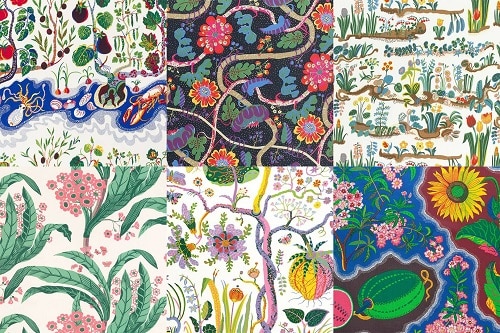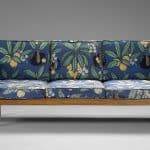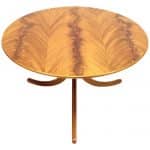20th Century Design Market: Hotter than Ever
by Pontus Silfverstolpe
For the last few years, the market for art, design, and collectibles has resembled a Wall Street stock during one of the most positive economic conditions in living memory. It has shown staggering increases in the value of everything from watches and diamonds to wine and classic cars.
When it comes to investing in art, design, and antiques, I always give the same advice. Buy with your heart, invest for your own wallet and remember that daily enjoyment is the true return.
The Barnebys Online Auction Report: 15 Designated designers – Trends and Insights finds that design has often been the best investment. In the report, thanks to greater transparency and increased access online, we can observe a strong growth of 20th century design. In other words, 20th century design has gone from being overlooked to becoming one of the world’s hottest interior design trends so far and a really good investment over time.
In the years 2009-2016, the market for design increased by nearly 330% at auction. Thus, we can conclude that design in many cases can be a better investment than art.
As you can imagine, it is far from a better investment of all art. However, compared with art sold at auction during the same period, the furniture that many of us grew up with seems to have turned into gold.
Look to the Everyday Items
While collectors today pay millions for unique, quality furniture and design objects by yesterday’s stars, the mass market for everyday objects has also exploded. Increased access means that everyone, no matter where you are in the world, has the opportunity to get their hands on iconic design furniture for a very modest price tag at any online auction or regional auction house that sells estates.
The value and price of design are controlled by the quality, uniqueness, condition, provenance, and presentation. Auction houses’ curated previews, extensive catalogs, and Instagram all play a crucial role in the final price – the better a piece is presented, the higher the bids at auction. However, it is clear that the quality in both design and craft determines the value. Good design should be both aesthetically pleasing and functional.
Functionalism’s real breakthrough came from the Bauhaus movement, which this year celebrates its 100th anniversary that brought about the 20th century ambition for a more beautiful design that could be mass-produced on assembly lines around the world. Several of the iconic furniture models that were designed between the 1930s and 1960s quickly became best sellers. The growth of this market was helped by the new pheno-menon of mail-order; simplified by flat packaging of furniture that could be sent across the globe.
Unique handmade objects, prototypes, and furniture made for special exhibitions have reached market price levels previously only dreamed of. Today, a piece of furniture shown at one of the major international exhibitions in the 1920s often costs as much as an antique dresser by one of the French 18th century masters, if not more.
Where the items are sold, regardless of where they originated, also played a crucial role in the final price. Many of the highest prices are paid by an international market, especially in London, New York, and Paris. In many ways, this is a positive development for small but strong design mounts such as Scandinavia, where several of the most celebrated designers are from Denmark and Sweden.
According to several of the Nordic auction houses, 90% of Scandinavian design objects sold at auction are exported to international collectors, interior designers, and design retailers, especially in the United States.
Long-Distance, Long-Lasting Trend
In the spring, the international trade fairs, such as the recently concluded Basel Design, TEFAF in New York and before that TEFAF in the Dutch city of Maastricht, show that design sold well. This trend also showed up at several of the auction houses, so it appears likely that the market will remain strong for years.
At the same time, a “mature” market with a wide variety of design will see average prices drop due to the industry’s transport problems and high costs that cast a shadow over mass-market, smaller sales. But when it comes to the top, high-class design objects, the market that was formerly local has become global and collectors have found it is worth the added allowance and effort to move objects between countries and continents.
Designer Josef Frank as a Benchmark
For example, in Sweden, Josef Frank and Svenskt Tenn have long been popular, but today the US is the hottest market for Frank’s design.
Josef Frank was born in Vienna, Austria in 1885 and in 1925, he founded with Oskar Wlach and Walther Sobotka the interior design firm Haus & Garten. The firm was successful in the first years and as a result, Josef Frank met Swedish Svenskt Tenn founder Estrid Ericson and they kept in touch. But the climate in Austria was becoming rougher for the country’s Jewish population because Nazism had taken hold and the Austrian government became increasingly authoritarian. Frank got fewer commissions in Vienna and in 1933 he fled with his Swedish wife Anna to her home country.
Meanwhile, the Austrian artistic scene was completely depleted in the 1930s, when a whole generation of artists, designers, and architects either chose to leave the country or were displaced.
In the early 1940s, anti-Semitism in Sweden became increasingly evident when Norway was occupied by German troops. Once again Josef Frank was forced to flee, leaving Sweden for the United States in 1942. During his time in the US, Frank worked as a teacher at the New School of Social Research in New York. He also continued to draw patterns, and in 1944 Frank sent 50 new patterns to Estrid Ericson on her 50th birthday, including Manhattan, Hawai, and Drinks.
Josef Frank’s Manhattan was inspired by New York’s stylized urban planning. Hawai was added after Frank visited the Metropolitan Museum of Art, and Drinks took shape based on the American flora. The plant world was a constant source of inspiration for Frank. In 1946 he returned to Stockholm and continued working for the Svenskt Tenn.
Josef Frank’s design language was characterized by more artistic aesthetics than the modern functionalism that earlier 20th century Swedish design advocated. His style incorporated rich color, light furniture and a sense of comfort that created airy rooms reminiscent of nature, which in turn led to lively and eclectically designed homes.
Frank’s furniture and design objects have long been popular with collectors, reaching high prices at auctions worldwide. Barnebys report shows that almost every object designed by Josef Frank, from placemats to furniture, that has appeared at auction has sold. And as millennials increasingly turn to vintage finds and the second hand market, quality 20th century design will continue to be on the rise.








Related posts: